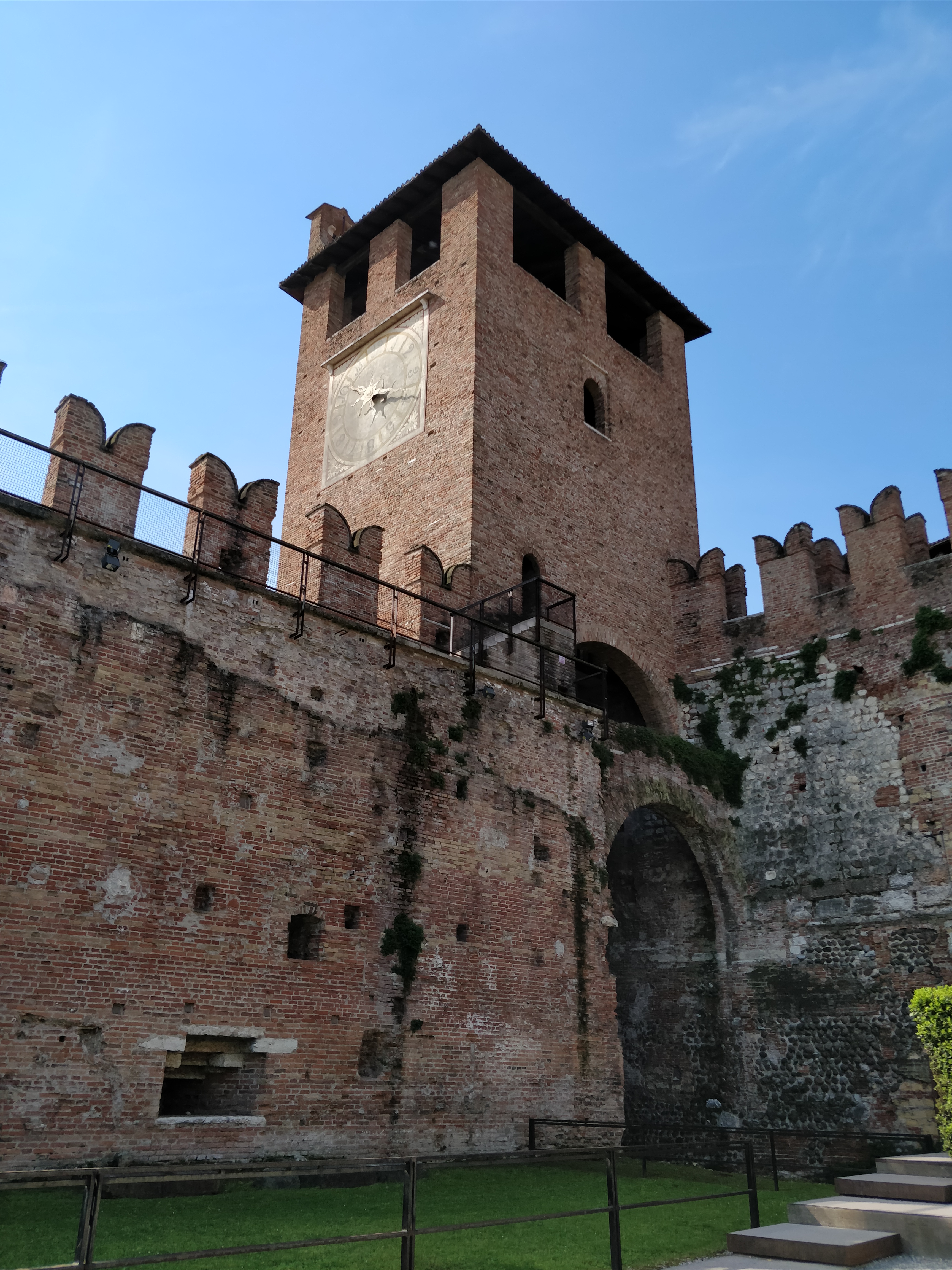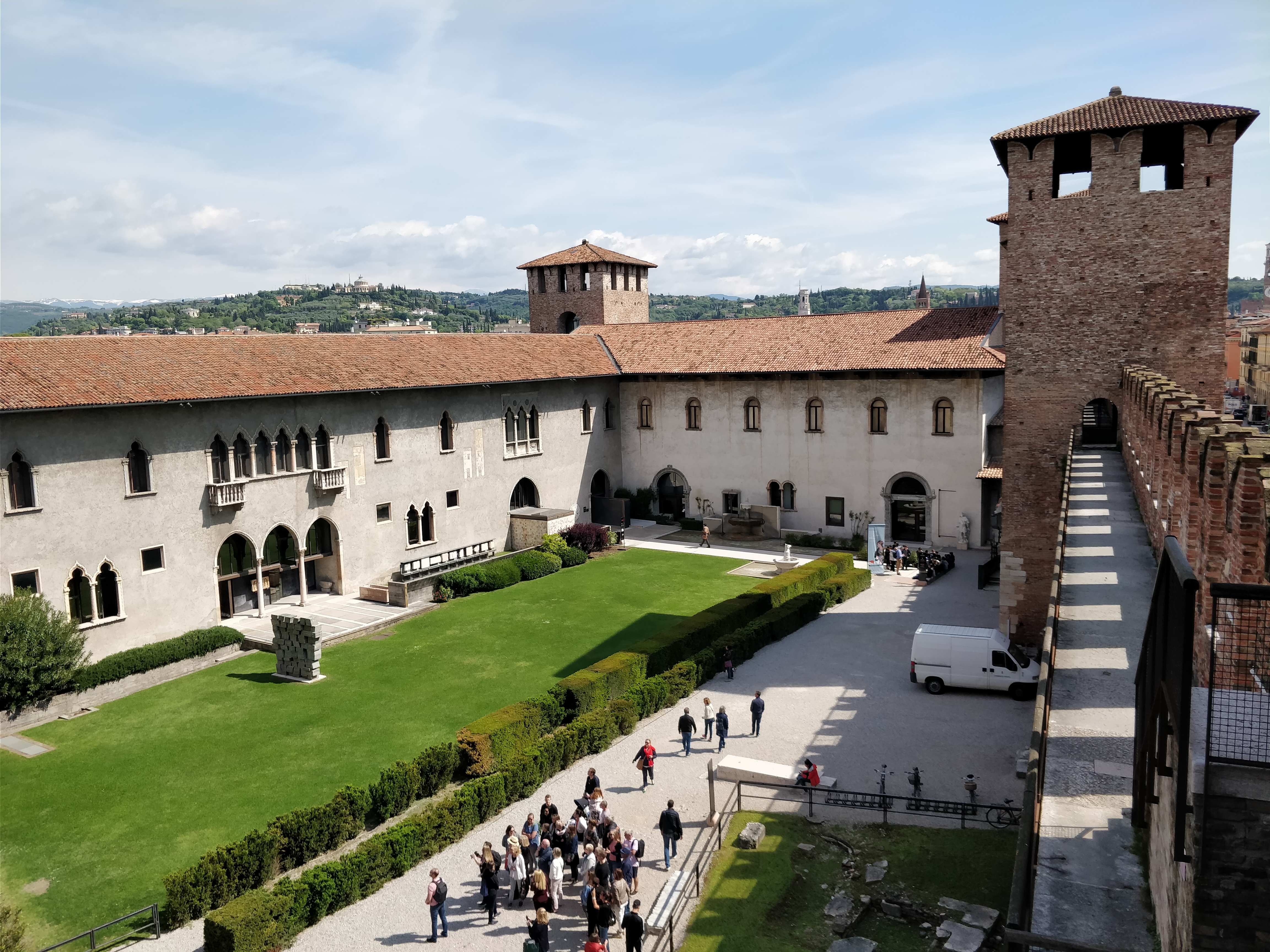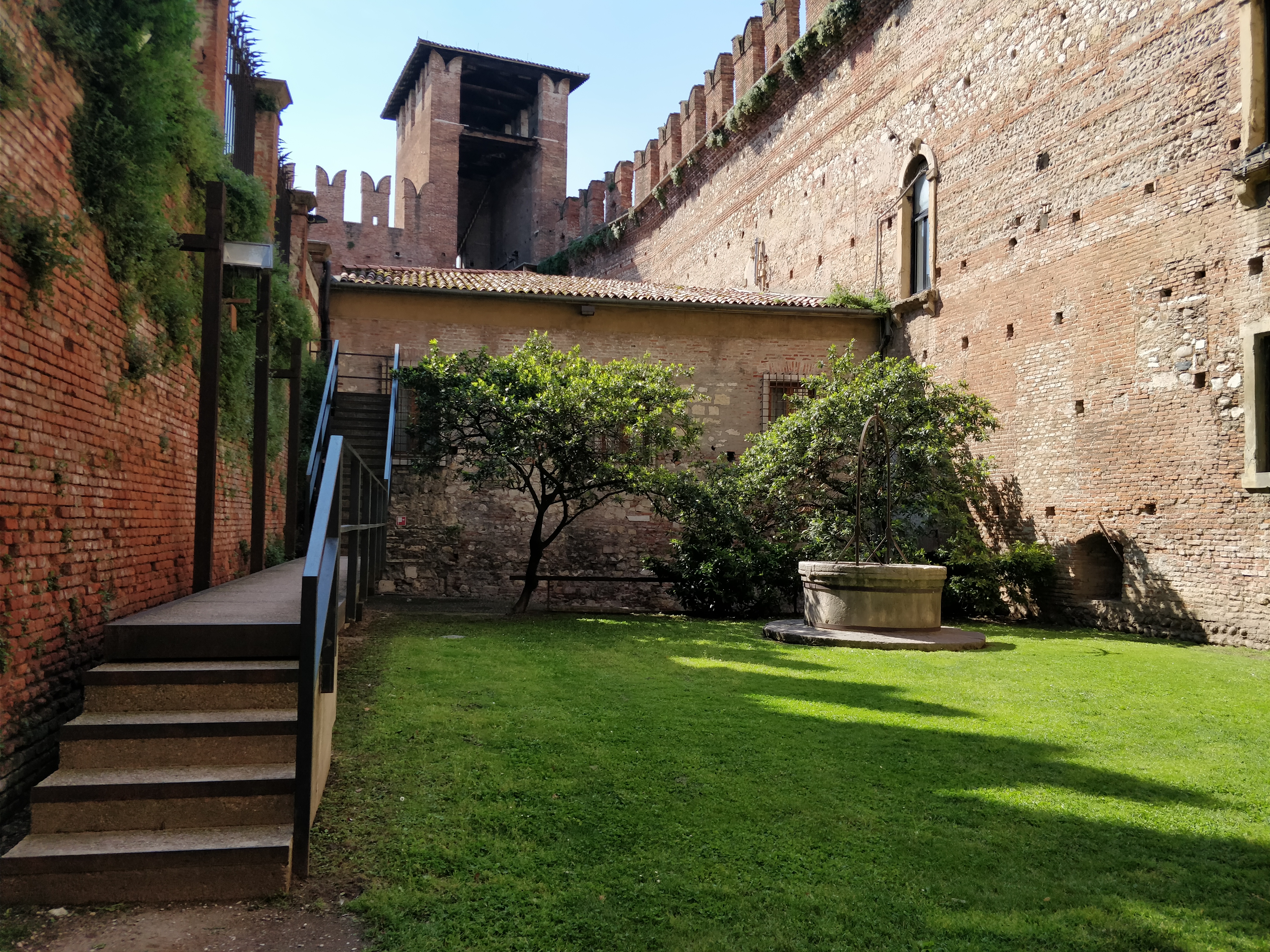castelvecchio museum, verona, italy
About 120 Kms from Venice is Verona which holds a very beautiful work of architecture, The Castelvecchio Museum. One one of the finest works of Carlos Scarpa, where the old and the new built form are weaved together with a fine thread. Walking about 20 minutes from Verona Porta Nuova station, this is an old castle sitting on the banks of meandering Adige River.
![]()
![]()
I started from the station walking along the smaller lanes of Verona, enjoying the scale the urban scape around me. Not too overwhelming, however close to ground, the street were lined with restaurants spilling over the road, shops and stores with displays on the sidewalks. As one approaches the fortress, the city becomes calmer and quieter.
![]()
Having heard a lot about this work of architecture and the architect, I was very keen to enter this old castle. Around noon, I reached the museum, the old rustic look of the ancient castle, big towering doors, the red brick clock tower welcomes you in. As one enters the courtyard through the big main door, on one side one sees the red brickwork and on the other side is plain cement concrete work. The courtyards calmly sit inside the large towering walls.
![]()
![]()
![]()
![]()
![]()
![]()
![]()
![]()
The new restoration work uses newer materials which compliement the type and style of architecture, the clean lines and ornate details of the edges catch the eye.
The museum, twisting and turning meanders through the fortress.
![]()
![]()
![]()
![]()
![]()
As one walks through the fortress museum, the built form connects one to the outside through metal lattice works and large pivotted doors, and carefully placed openings. The play between inside and outside is very inticing.
![]()
![]()
![]()
![]()
![]()
At the end of the corridor on the ground floor as I stepped in to the open court and looked up, my attention was caught by the below view. Clean concrete work with liner delicate metal work weaving the concrete and the older brick arches together. The wooden trusses and panel work adding to the warmth of the place.
![]()
![]()


I started from the station walking along the smaller lanes of Verona, enjoying the scale the urban scape around me. Not too overwhelming, however close to ground, the street were lined with restaurants spilling over the road, shops and stores with displays on the sidewalks. As one approaches the fortress, the city becomes calmer and quieter.

Having heard a lot about this work of architecture and the architect, I was very keen to enter this old castle. Around noon, I reached the museum, the old rustic look of the ancient castle, big towering doors, the red brick clock tower welcomes you in. As one enters the courtyard through the big main door, on one side one sees the red brickwork and on the other side is plain cement concrete work. The courtyards calmly sit inside the large towering walls.








The new restoration work uses newer materials which compliement the type and style of architecture, the clean lines and ornate details of the edges catch the eye.
The museum, twisting and turning meanders through the fortress.





As one walks through the fortress museum, the built form connects one to the outside through metal lattice works and large pivotted doors, and carefully placed openings. The play between inside and outside is very inticing.





At the end of the corridor on the ground floor as I stepped in to the open court and looked up, my attention was caught by the below view. Clean concrete work with liner delicate metal work weaving the concrete and the older brick arches together. The wooden trusses and panel work adding to the warmth of the place.


Several spaces were left incomplete, many pieces were missing, edges were exposed, gaps were pronounced stringing a beautiful narrative of the old and the new.
*****